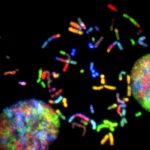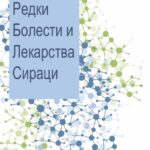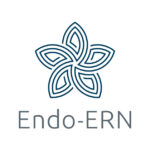 In recent years, many genes have been associated with chromatinopathies classified as “Cornelia de Lange Syndrome-like.” It is known that the phenotype of these patients becomes less recognizable, overlapping to features characteristic of other syndromes caused by genetic variants affecting different regulators of chromatin structure and function. Therefore, Cornelia de Lange syndrome diagnosis might be arduous due to the seldom discordance between unexpected molecular diagnosis and clinical evaluation. Here, we review the molecular features of Cornelia de Lange syndrome, supporting the hypothesis that “CdLS-like syndromes” are part of a larger “rare disease family” sharing multiple clinical features and common disrupted molecular pathways. For more information click here.
In recent years, many genes have been associated with chromatinopathies classified as “Cornelia de Lange Syndrome-like.” It is known that the phenotype of these patients becomes less recognizable, overlapping to features characteristic of other syndromes caused by genetic variants affecting different regulators of chromatin structure and function. Therefore, Cornelia de Lange syndrome diagnosis might be arduous due to the seldom discordance between unexpected molecular diagnosis and clinical evaluation. Here, we review the molecular features of Cornelia de Lange syndrome, supporting the hypothesis that “CdLS-like syndromes” are part of a larger “rare disease family” sharing multiple clinical features and common disrupted molecular pathways. For more information click here.
Publications
 Hereditary angioedema (HAE) with C1 esterase inhibitor deficiency (C1-INH-HAE) is a rare disease that manifests with cutaneous and/or submucosal swellings due to uncontrolled activation of the contact/kinin system. Attacks recur with unpredictable frequency and severity, laryngeal edema is potentially lethal, and the disease burden may severely disrupt patients’ lives.Areas covered: This review provides an overview of lanadelumab, a human monoclonal antibody targeted against plasma kallikrein that was recently approved for prevention of symptoms in C1-INH-HAE.Expert opinion: The phase III HELP Study demonstrated the efficacy of lanadelumab in reducing HAE attacks. These positive results are being further confirmed in the open-label extension study. This agent addresses some of the limitations of existing prophylactic options as tolerability issues, the need for intravenous administration and frequent dosing. Therefore, lanadelumab can profoundly improve the quality of life of patients with C1-INH-HAE. For more information click here.
Hereditary angioedema (HAE) with C1 esterase inhibitor deficiency (C1-INH-HAE) is a rare disease that manifests with cutaneous and/or submucosal swellings due to uncontrolled activation of the contact/kinin system. Attacks recur with unpredictable frequency and severity, laryngeal edema is potentially lethal, and the disease burden may severely disrupt patients’ lives.Areas covered: This review provides an overview of lanadelumab, a human monoclonal antibody targeted against plasma kallikrein that was recently approved for prevention of symptoms in C1-INH-HAE.Expert opinion: The phase III HELP Study demonstrated the efficacy of lanadelumab in reducing HAE attacks. These positive results are being further confirmed in the open-label extension study. This agent addresses some of the limitations of existing prophylactic options as tolerability issues, the need for intravenous administration and frequent dosing. Therefore, lanadelumab can profoundly improve the quality of life of patients with C1-INH-HAE. For more information click here.
 Glycogen storage disease type II (GSDII, Pompe disease) is a rare metabolic disorder caused by a deficiency of acid alpha-glucosidase (GAA), an enzyme localized within lysosomes that is solely responsible for glycogen degradation in this compartment. The manifestations of GSDII are heterogeneous but are classified as early or late onset. The natural course of early-onset Pompe disease (EOPD) is severe and rapidly fatal if left untreated. Currently, one therapeutic approach, namely, enzyme replacement therapy, is available, but advances in molecular medicine approaches hold promise for even more effective therapeutic strategies. These approaches, which we review here, comprise splicing modification by antisense oligonucleotides, chaperone therapy, stop codon readthrough therapy, and the use of viral vectors to introduce wild-type genes. Considering the high rate at which innovations are translated from bench to bedside, it is reasonable to expect substantial improvements in the treatment of this illness in the foreseeable future. For more information click here.
Glycogen storage disease type II (GSDII, Pompe disease) is a rare metabolic disorder caused by a deficiency of acid alpha-glucosidase (GAA), an enzyme localized within lysosomes that is solely responsible for glycogen degradation in this compartment. The manifestations of GSDII are heterogeneous but are classified as early or late onset. The natural course of early-onset Pompe disease (EOPD) is severe and rapidly fatal if left untreated. Currently, one therapeutic approach, namely, enzyme replacement therapy, is available, but advances in molecular medicine approaches hold promise for even more effective therapeutic strategies. These approaches, which we review here, comprise splicing modification by antisense oligonucleotides, chaperone therapy, stop codon readthrough therapy, and the use of viral vectors to introduce wild-type genes. Considering the high rate at which innovations are translated from bench to bedside, it is reasonable to expect substantial improvements in the treatment of this illness in the foreseeable future. For more information click here.
Clinical-therapeutic monitoring of a patient with transthyretin familial amyloid polyneuropathy
 Transthyretin familial amyloid polyneuropathy (TTR-FAP) is an autosomal dominant disease caused by mutations in the transthyretin gene, with the most common mutation being V30M (single amino acid substitution of methionine for valine at position 30). Although each TTR variant has a different clinical presentation, peripheral neuropathy and cardiomyopathy are the most common manifestations. Renal impairment is not quite common. Initially thought to be a disease of benign evolution with respect to the kidneys, it was later found that progression to end-stage renal disease occurs in 10% of patients as a natural course of the disease. The detection and prognosis of TTR-FAP nephropathy depend on the presence of albuminuria and increased serum creatinine. Vegetative dysfunction, manifested as sexual disorders or urinary infections, is also common. Nephropathy does not correlate with age, duration of disease or severity of neuropathy. We hereby present a case report of a patient with TTR-FAP, genetically proven by DNA analysis, followed up at the Nephrology Department, University Hospital “St. George”, Plovdiv, for a period of 4 years. For more information click here.
Transthyretin familial amyloid polyneuropathy (TTR-FAP) is an autosomal dominant disease caused by mutations in the transthyretin gene, with the most common mutation being V30M (single amino acid substitution of methionine for valine at position 30). Although each TTR variant has a different clinical presentation, peripheral neuropathy and cardiomyopathy are the most common manifestations. Renal impairment is not quite common. Initially thought to be a disease of benign evolution with respect to the kidneys, it was later found that progression to end-stage renal disease occurs in 10% of patients as a natural course of the disease. The detection and prognosis of TTR-FAP nephropathy depend on the presence of albuminuria and increased serum creatinine. Vegetative dysfunction, manifested as sexual disorders or urinary infections, is also common. Nephropathy does not correlate with age, duration of disease or severity of neuropathy. We hereby present a case report of a patient with TTR-FAP, genetically proven by DNA analysis, followed up at the Nephrology Department, University Hospital “St. George”, Plovdiv, for a period of 4 years. For more information click here.
 A survey, organized by the working group Research and Science of the European Reference Network on rare endocrine conditions (Endo-ERN) is being conducted. The aim of this survey is to gain the views and experiences of people living with rare endocrine disorders about the research they think should be prioritized related to their disease within European countries. Patients, parents, and relatives can participate in this study by following this link.
A survey, organized by the working group Research and Science of the European Reference Network on rare endocrine conditions (Endo-ERN) is being conducted. The aim of this survey is to gain the views and experiences of people living with rare endocrine disorders about the research they think should be prioritized related to their disease within European countries. Patients, parents, and relatives can participate in this study by following this link.
Management, employment categories and professional qualification of human resources at health technology assessment organizations
 The objectives are comparison and critical analysis of the management, employment categories and professional qualification of human resources at health technology assessment (HTA) organizations. The method used was international Web-based survey of HTA organizations with diversified profile. A total number of 111 questionnaires from 39 countries on 5 continents were received, representing a 35.58% response rate. According to the respondents (n=48, 45.71±4.86%), management of the organization is performed by a manager, director or president. The regular work on HTA report preparation is carried out in combined mode – as part of the operational activity of the organization, but also with external expertise (n=46, 44.23±4.48%). The workforce employed by the organization most often falls into the category of full-time permanent staff (n=96, 93.20±2.48%). The most common professional qualification of HTA employees is health economics (n=73, 70.87±4.48%), followed by public health professionals (n=66, 64.08±4.73%), epidemiology (n=62, 60.19±4.82%), health service studies (n=62, 60.19±4.82%), biostatistics (n=59, 57.28±4.87%) and physicians from various clinical specialties (n=58, 56.31±4.89%). Regardless of whether the activity will be performed inside or outside the HTA structure, the organization of human resources is a component that contributes to the overall efficiency in the HTA capacity building process. For more information click here.
The objectives are comparison and critical analysis of the management, employment categories and professional qualification of human resources at health technology assessment (HTA) organizations. The method used was international Web-based survey of HTA organizations with diversified profile. A total number of 111 questionnaires from 39 countries on 5 continents were received, representing a 35.58% response rate. According to the respondents (n=48, 45.71±4.86%), management of the organization is performed by a manager, director or president. The regular work on HTA report preparation is carried out in combined mode – as part of the operational activity of the organization, but also with external expertise (n=46, 44.23±4.48%). The workforce employed by the organization most often falls into the category of full-time permanent staff (n=96, 93.20±2.48%). The most common professional qualification of HTA employees is health economics (n=73, 70.87±4.48%), followed by public health professionals (n=66, 64.08±4.73%), epidemiology (n=62, 60.19±4.82%), health service studies (n=62, 60.19±4.82%), biostatistics (n=59, 57.28±4.87%) and physicians from various clinical specialties (n=58, 56.31±4.89%). Regardless of whether the activity will be performed inside or outside the HTA structure, the organization of human resources is a component that contributes to the overall efficiency in the HTA capacity building process. For more information click here.
 This study aims to identify and critically analyze the scope and the objectives of health technology assessment (HTA) organizations. The method used was international Web-based survey of HTA organizations with diversified profile. A total number of 111 questionnaires from 39 countries on 5 continents were received, representing a 35.58% response rate. According to the impact area, HTAs operate at the following levels – international (n=61, 54.95±8.76%), national (n=92, 82.88±9.74%), local/regional (n=73, 65.77±9.24%) and other (n=6, 6.31±3.40%). Organizational regulation – defining the activity, order and functioning of the organization, was adopted by 60.55±4.68% (n=60). The priority areas for the organization activities with the highest relative part is the assessment of health technologies 81.65±13.32% (n=89), followed by activities related to health policy 50.46±11.14% (n=55) and research 43.12±10.43% (n=47). The processes of modification and adaptation go through the trend of isochronous production of reports, research in the field of health services and quality assessments within the framework of the HTA organizations. The development of the agencies‘ activities in these directions reflects the belief that the knowledge needed to manage health care system based on a science-based approach extends beyond the scope of regular HTA. For more information click here.
This study aims to identify and critically analyze the scope and the objectives of health technology assessment (HTA) organizations. The method used was international Web-based survey of HTA organizations with diversified profile. A total number of 111 questionnaires from 39 countries on 5 continents were received, representing a 35.58% response rate. According to the impact area, HTAs operate at the following levels – international (n=61, 54.95±8.76%), national (n=92, 82.88±9.74%), local/regional (n=73, 65.77±9.24%) and other (n=6, 6.31±3.40%). Organizational regulation – defining the activity, order and functioning of the organization, was adopted by 60.55±4.68% (n=60). The priority areas for the organization activities with the highest relative part is the assessment of health technologies 81.65±13.32% (n=89), followed by activities related to health policy 50.46±11.14% (n=55) and research 43.12±10.43% (n=47). The processes of modification and adaptation go through the trend of isochronous production of reports, research in the field of health services and quality assessments within the framework of the HTA organizations. The development of the agencies‘ activities in these directions reflects the belief that the knowledge needed to manage health care system based on a science-based approach extends beyond the scope of regular HTA. For more information click here.
 Leber’s hereditary optic neuropathy (LHON) is a mitochondrial neurodegenerative disease which affects the optic nerve. LHON is among the most frequent hereditary neuropathies caused by point mutations in mitochondrial DNA and subsequent mitochondrial dysfunction. The main clinical manifestation is painless central vision loss affecting both eyes consequently or simultaneously. The condition affects predominantly young male individuals. LHON is the first clinically described mitochondrial disease, mentioned as the most frequent in some publications. The study of LHON epidemiology is difficult due to its diverse and constantly evolving molecular genetic characteristics. Several cohort studies have assessed individuals from different age groups and described diverse factors causing LHON as well as its molecular genetic specifics. This publication aims to analyze available epidemiological data on Leber’s hereditary optic neuropathy and to provide insights into LHON prevalence in Bulgaria. For more information click here.
Leber’s hereditary optic neuropathy (LHON) is a mitochondrial neurodegenerative disease which affects the optic nerve. LHON is among the most frequent hereditary neuropathies caused by point mutations in mitochondrial DNA and subsequent mitochondrial dysfunction. The main clinical manifestation is painless central vision loss affecting both eyes consequently or simultaneously. The condition affects predominantly young male individuals. LHON is the first clinically described mitochondrial disease, mentioned as the most frequent in some publications. The study of LHON epidemiology is difficult due to its diverse and constantly evolving molecular genetic characteristics. Several cohort studies have assessed individuals from different age groups and described diverse factors causing LHON as well as its molecular genetic specifics. This publication aims to analyze available epidemiological data on Leber’s hereditary optic neuropathy and to provide insights into LHON prevalence in Bulgaria. For more information click here.
 Phenylketonuria (PKU) is a metabolic condition which, left untreated, results in severe and irreversible brain damage. New-born screening and the development of the low phenylalanine (Phe) diet have transformed the outcomes for people with PKU. Those who have benefited from early treatment are now approaching their fifth and sixth decade. It is therefore timely to consider multi-morbidity in PKU and the effects of ageing, in parallel with the wider benefits of emerging treatment options in addition to dietary relaxation. We have conducted the first literature review of co-morbidity and ageing in the context of PKU. Avenues explored have emerged from limited study of multi-morbidity to date and the knowledge and critical enquiry of the authors. Findings suggest PKU to have a wider impact than brain development, and result in several intriguing questions that require investigation to attain the best outcomes for people with PKU in adulthood moving through to older age. We recognise the difficulty in studying longitudinal outcomes in rare disease and emphasise the necessity to develop PKU registries and cohorts that facilitate well designed studies to answer some of the questions raised in this review. Whilst awaiting new information in these areas we propose that clinicians engage with patients to make personalised and well-informed decisions around Phe control and assessment for co-morbidity. For more information click here.
Phenylketonuria (PKU) is a metabolic condition which, left untreated, results in severe and irreversible brain damage. New-born screening and the development of the low phenylalanine (Phe) diet have transformed the outcomes for people with PKU. Those who have benefited from early treatment are now approaching their fifth and sixth decade. It is therefore timely to consider multi-morbidity in PKU and the effects of ageing, in parallel with the wider benefits of emerging treatment options in addition to dietary relaxation. We have conducted the first literature review of co-morbidity and ageing in the context of PKU. Avenues explored have emerged from limited study of multi-morbidity to date and the knowledge and critical enquiry of the authors. Findings suggest PKU to have a wider impact than brain development, and result in several intriguing questions that require investigation to attain the best outcomes for people with PKU in adulthood moving through to older age. We recognise the difficulty in studying longitudinal outcomes in rare disease and emphasise the necessity to develop PKU registries and cohorts that facilitate well designed studies to answer some of the questions raised in this review. Whilst awaiting new information in these areas we propose that clinicians engage with patients to make personalised and well-informed decisions around Phe control and assessment for co-morbidity. For more information click here.
 Uterine leiomyomas are the most common gynecologic tumors. These tumors are found in a large percentage of women during the reproductive years. The size of leiomyomas varies a lot. Giant leiomyomas are extremely rare. Here we represent a case of a 39-year old woman. Gynecological examination reveals a large abdominal mass. Findings on MRI scan suggest malignant abdominal tumor. The patient underwent myomectomy and a gross pathologic examination revealed cystic mass measuring 32cm×23сm×12сm. The subsequent histology revealed a leiomyoma with extensive cystic degeneration. Imaging studies are helpful in diagnosing common cases of uterine leiomyomas. However, degeneration of these tumors, as well as their uncommon large size, make the diagnostic process more complicated. For more information click here.
Uterine leiomyomas are the most common gynecologic tumors. These tumors are found in a large percentage of women during the reproductive years. The size of leiomyomas varies a lot. Giant leiomyomas are extremely rare. Here we represent a case of a 39-year old woman. Gynecological examination reveals a large abdominal mass. Findings on MRI scan suggest malignant abdominal tumor. The patient underwent myomectomy and a gross pathologic examination revealed cystic mass measuring 32cm×23сm×12сm. The subsequent histology revealed a leiomyoma with extensive cystic degeneration. Imaging studies are helpful in diagnosing common cases of uterine leiomyomas. However, degeneration of these tumors, as well as their uncommon large size, make the diagnostic process more complicated. For more information click here.
